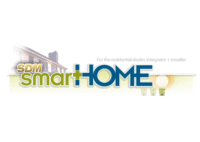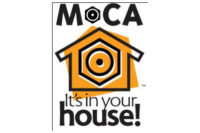
Don’t brush off the EPA RRP rule. Trade workers who disturb painted and varnished surfaces mostly in homes built before 1978 will have to be certified.
On the enforcement side, uncertified firms which provide these services are subject to penalties up to $37,500 per violation, per day. More than meeting a requirement, however, individual and firm certification can also differentiate one company from another as well as display a commitment to safe homes and housing.
Many people, and especially home safety advocates, believe the rule is the most important Federal lead regulation since the U.S. Housing and Urban Development Department’s Lead-Safe Housing Rule a decade ago. It has the potential to ensure the widespread use of lead-safe work practices in homes and child-occupied facilities and may be extended to public and commercial buildings in the future.
By EPA's estimates, at least 235,000 individuals and 210,000 firms will successfully go through the certification process this year.
The RRP rule enables workers to minimize introduction of lead hazards resulting from the disturbance of lead-based paint during renovation, repair, and painting activities in most housing built prior to 1978.
And one professional certification source, not surprisingly, is CEDIA, which has already helped professionals through its two-step course process which uses certified trainers. Individuals can register online at www.cedia.org/lead or by phone at (800) 669-5329.
The online component (part one) meets the 43 objectives listed in EPA’s requirements for course content. Some are:
1. Identify the health problems associated with disturbing lead based paint or LBP.
2. Outline why the EPA issued its 2008 rule requiring lead-safe work practices.
3. Determine how the EPA rule affects your work and how to set up a work area to contain dust and debris and simplify clean up.
4. Understand how to train workers you supervise so they follow the rules, clean up lead-based dust and properly dispose of waste.
1. Identify the health problems associated with disturbing lead based paint or LBP.
2. Outline why the EPA issued its 2008 rule requiring lead-safe work practices.
3. Determine how the EPA rule affects your work and how to set up a work area to contain dust and debris and simplify clean up.
4. Understand how to train workers you supervise so they follow the rules, clean up lead-based dust and properly dispose of waste.
Focus of the hands-on lab component (part two) of the CEDIA course is to apply skills learned in the online component to demonstrate hands-on proficiency to work safely in housing with lead-based paint. Students demonstrate how to handle lead-based dust, for example. Learning outcomes of the lab component include:
1. Demonstrate practical steps to avoid making dust that may contain lead.
2. Demonstrate methods to contain any dust you create when disturbing old paint.
3. Demonstrate how to clean-up dust that is not contained.
4. Understand the documentation process to confirm accurate work practices.
5. Understand work practices that will keep renovators safe and reduce liability exposure.
1. Demonstrate practical steps to avoid making dust that may contain lead.
2. Demonstrate methods to contain any dust you create when disturbing old paint.
3. Demonstrate how to clean-up dust that is not contained.
4. Understand the documentation process to confirm accurate work practices.
5. Understand work practices that will keep renovators safe and reduce liability exposure.
In the hands-on lab, students are assigned to groups of between two and three students each. Each group is expected to complete the entire set of exercises except a paint test kit exercise that must be performed by each student individually.
Trainers for the RRP rule must themselves be certified for the task. CEDIA, for example, has partnered with the National Center for Healthy Housing (NCHH) and is using its pool of approved principal instructors to lead the hands-on sessions. In addition to NCHH, CEDIA has been working with ADI and the National Association of the Remodeling Industry in a traveling series.
ADI realized the impact of the RRP rule and wanted to assist CEDIA in its mission to protect the industry. ADI has donated use of branch classrooms for the initiative, providing multiple opportunities to complete the Certified Renovator training and certification. See the events calendar at the end of this article. NARI has joined the effort by educating its members while actively promoting Certified Renovator training opportunities.
As with any new regulation, there are some twists and turns.
Generally, the EPA rule mandates that one person on staff be a Certified Renovator. However, the firm also must be a Certified Renovation Firm. An application can be downloaded from EPA’s Web site: http://www.epa.gov/lead/pubs/sbcomplianceguide.pdf. According to CEDIA, firms should submit this application (along with the $300 fee payable to EPA) as soon as possible. They do not need to wait until a staff member has completed the Certified Renovator training and certification.
Firms should check with their state to see if it has been approved for state jurisdiction. These states can impose regulations that are more stringent than those established by the EPA rule. One example: Kansas is proposing that every worker on the job site be a Certified Renovator. NCHH maintains a state-by-state listing on its Web site (http://www.healthyhomestraining.org/RRP/State.htm), but CEDIA additionally encourages firms to verify the information with their state government.




